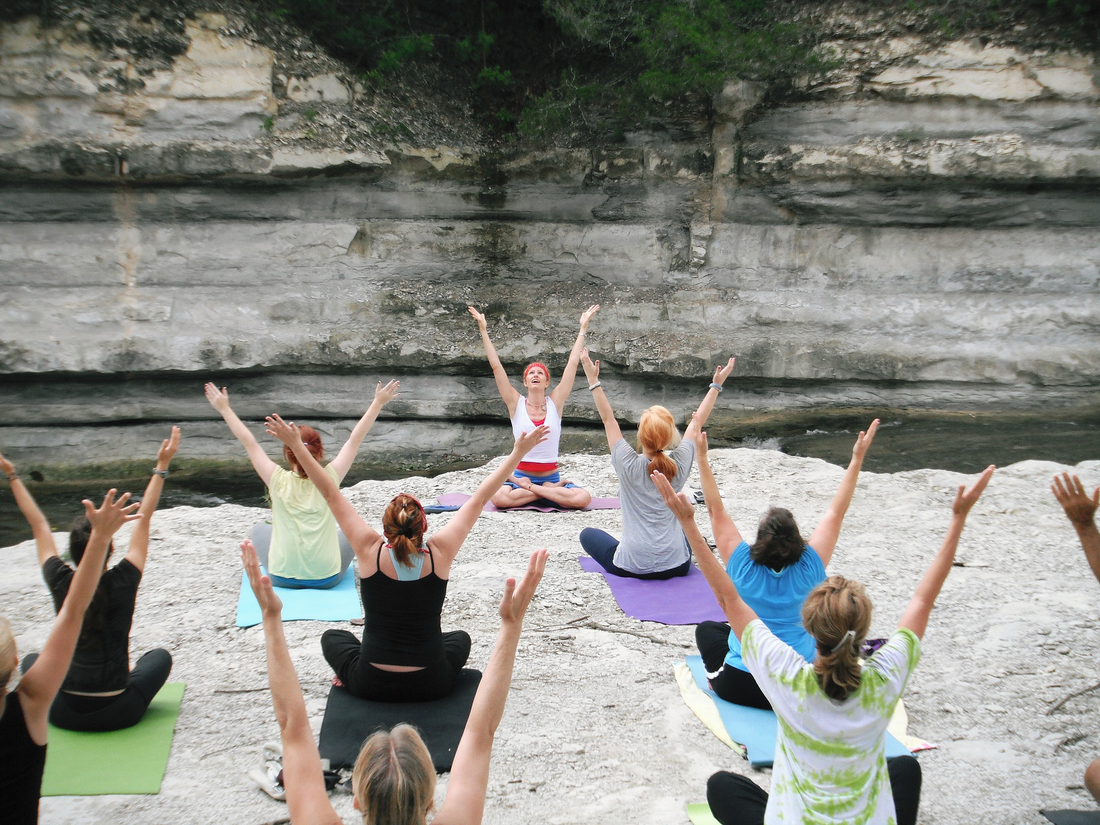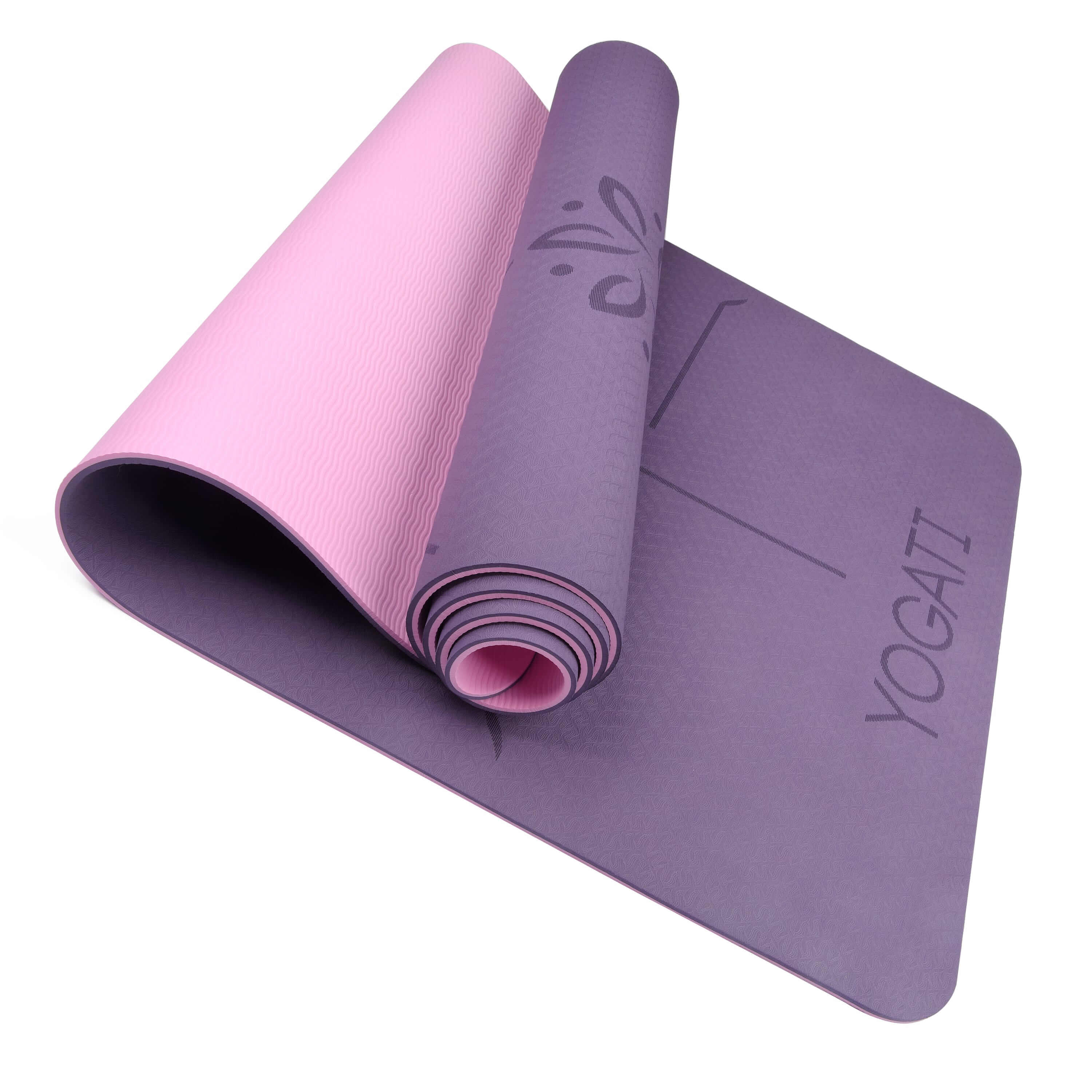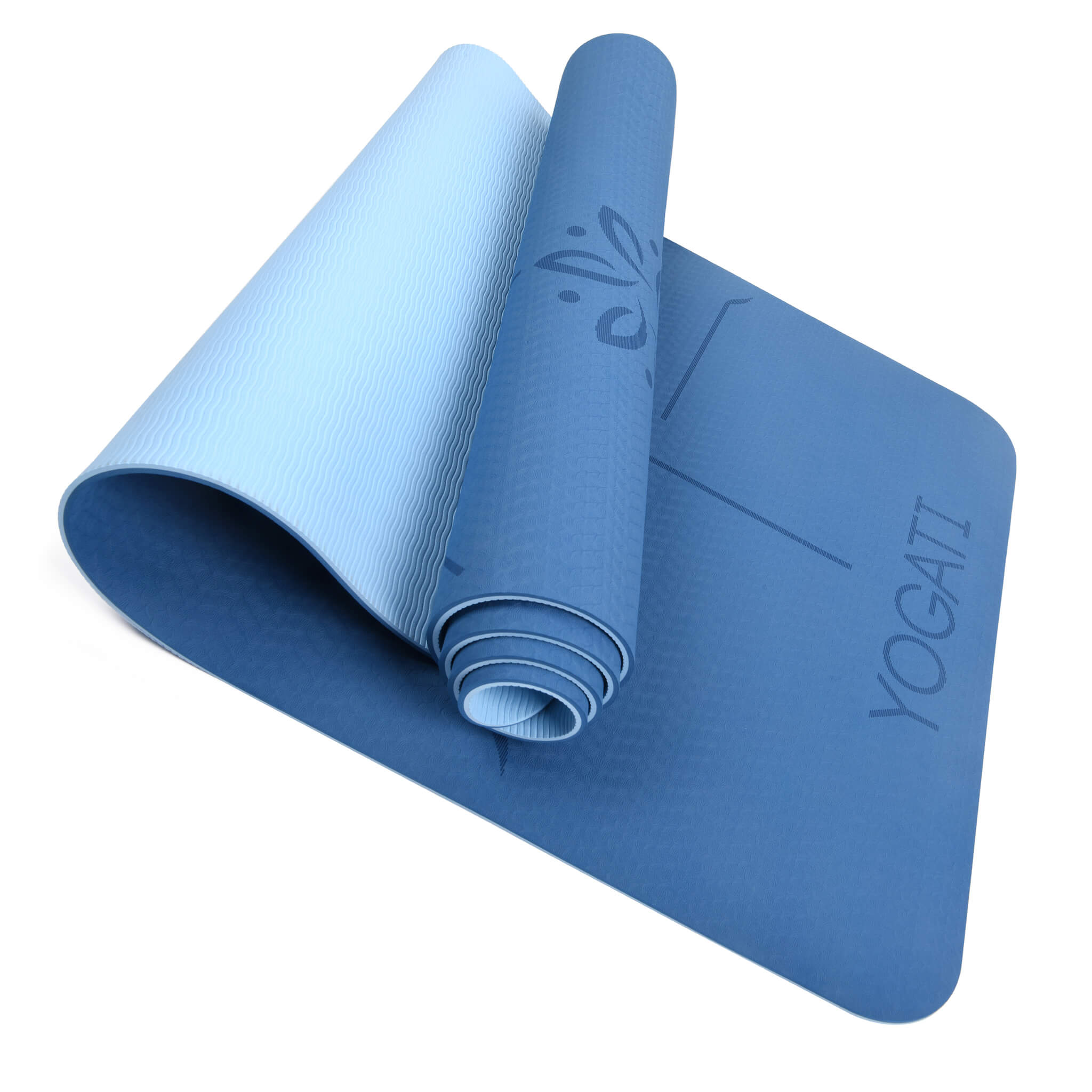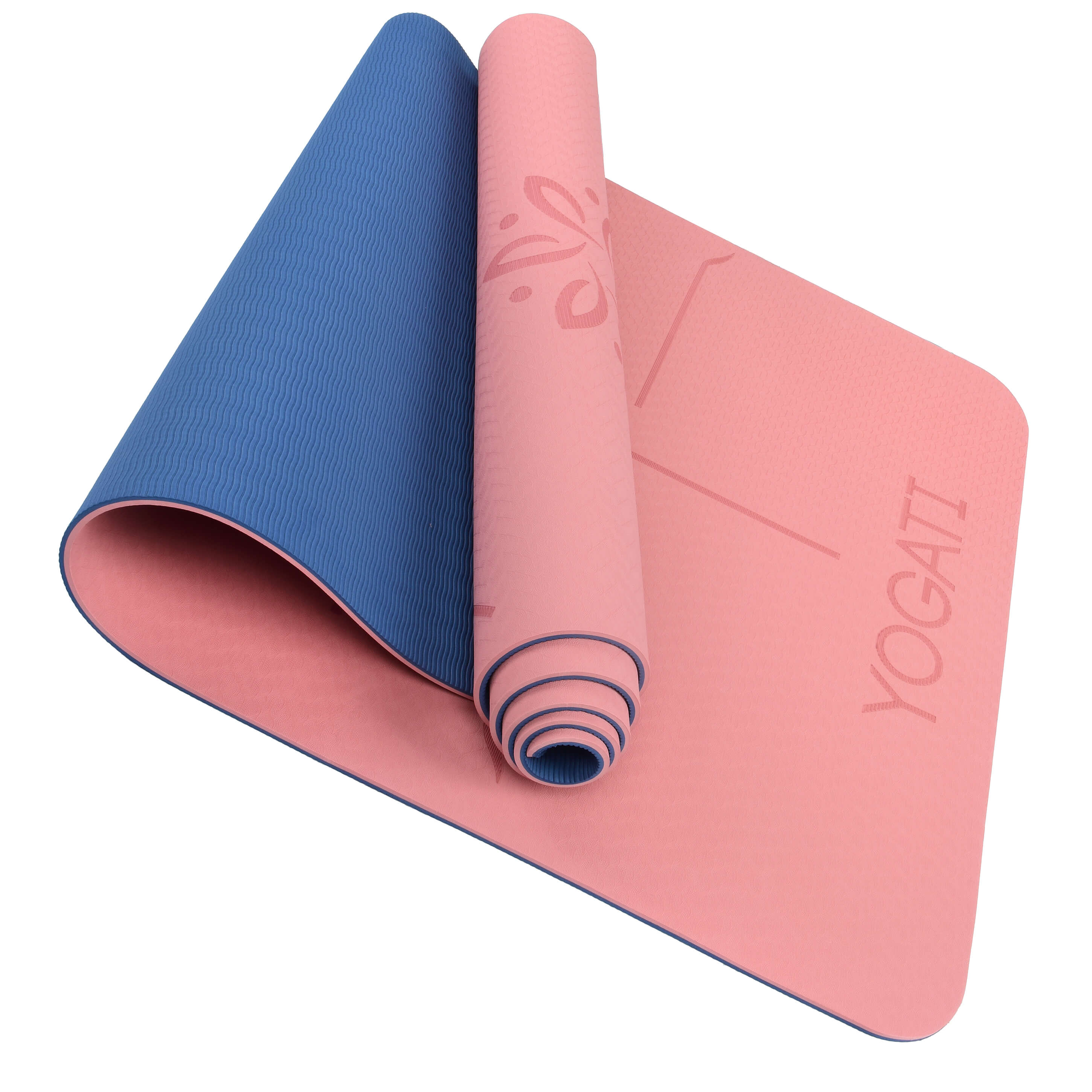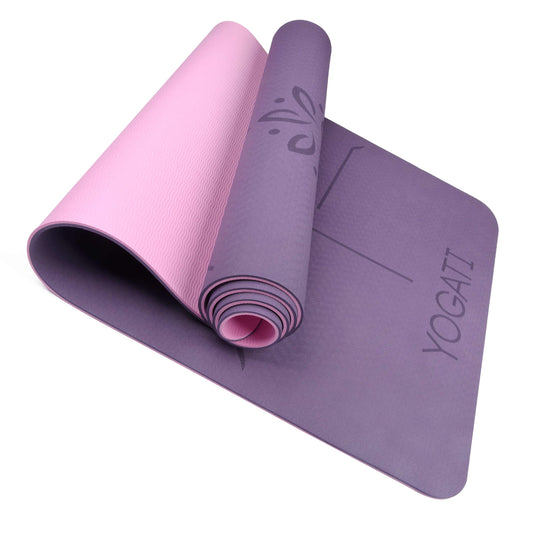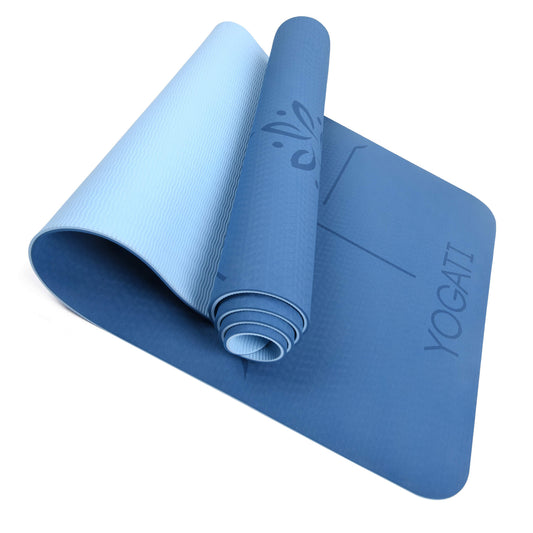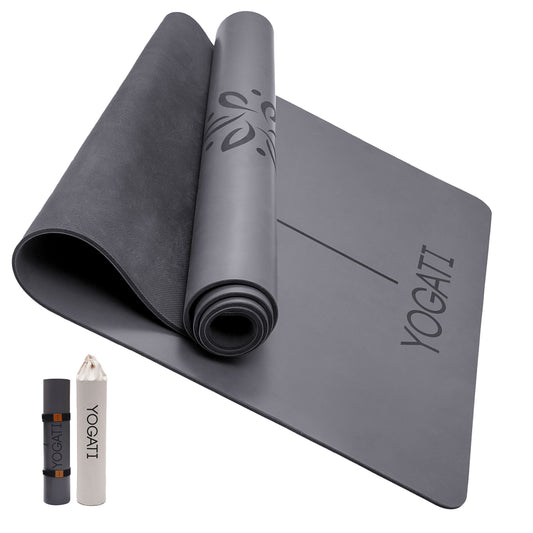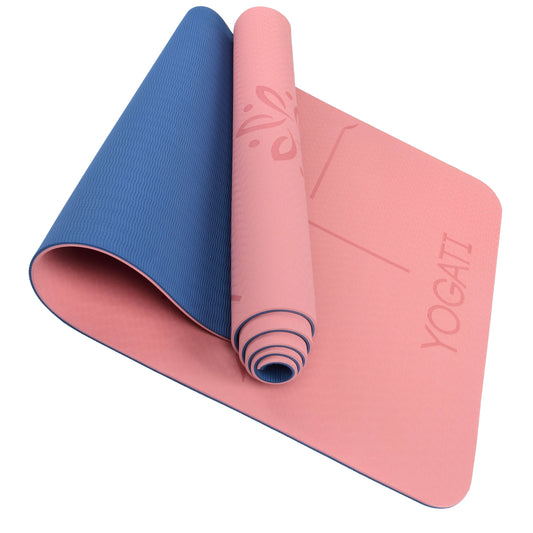Introduction :
Have you ever dreamed of a recreational activity that can help relieve your anxiety, improve your rate of flexibility, strengthen your muscles, and develop your ability to calm down and reduce stress?
During my research, I discovered that there is a discipline allowing to benefit from these various advantages and it is called as you know it beforehand: YOGA.
In this article, I want to share with you a summary (on the practical side of yoga and not religious) which will allow you to have a global vision of this discipline.
As I am a beginner in yoga, at first I had trouble finding what type of yoga to choose? This is why I started to do research which I have summarized in a coherent way in this article which I call: the guide to the practice of yoga.
Briefly, what is yoga?

Yoga is a discipline that originated over 5,000 years ago in ancient India. It is a union of physical, spiritual and mental discipline, which influences and regulates body and mind, binding them in mutual harmony.
The term "Yoga" evolved from the Sanskrit root Yuj , which literally means to connect or unite.
The history and origin of yoga:
Evidence of yoga dates back as far as 3000 BC. Subsequently, it evolved through oral transmission, from master to disciple. This practice was highly prized by ascetics, sages, mystics and also magicians.
Thus, the rare texts that we have were written in order to protect the tradition in the event of a break in the initial chain and to ward off indiscreet profane people.
By way of indication, Shiva is perceived as the first Yogi or Guru. As for Patanjali the Yogi, is considered the first Indian yogi sage to write down the fundamental principles, philosophy and practices of yoga, 2500 years ago.

Guide for the practice of yoga:
Yoga does not take into account any specific belief or religion. It has always been practiced as automation for inner well-being. Once you accept yoga as an activity of daily living, it can help you achieve its collective benefits, regardless of your culture or faith.
Yoga involves all aspects of your life, which tends to heal all physical health, size and shape of your body.
Yoga is primarily focused on strengthening specific parts of the body through postures known as Asana and breath control known as Pranayama to unify body with mind and soul.

"When you listen to yourself, everything comes naturally. It comes from within, like a kind of will to do something. Try to be sensitive. That's yoga."— Petri Râisen
The body
Yoga is known by a sequence of various body postures (Asana) more or less difficult and performed on a suitable yoga mat.
These postures are held in a still, comfortable and relaxed way in order to bring about relaxation.
There are three kinds of postures in Sanskrit:
- Bandha (Body lock) : Bandhas are deployed to access control of your energy system and to dominate that energy to sections of your body to your preferred locations and tasks to perform;
- Kriya (Completed action) : This is a process or practice within a discipline of yoga intended to achieve a specific result in your body. Among the various forms of Kriya: asceticism, study and devotion;
- Mudra (Gesture): This is a symbolic pose, used to contain energy or focus consciousness in the body.
Breathing
Also known in Sanskrit as Pranayamas. This practice helps regulate the flow of energy in your body. Besides, controlling my breath helped me focus on my muscles when practicing, and also allowed me to reduce the speed of my heart's rapid beat during stressful situations, leading to true calm. interior and a state of relaxation.
The mind
Yoga uses the mind to educate you on how to focus on specific parts of the body. During a yoga session, you may be asked to focus intensely on only one particular part of your body. This allows the brain and body to recognize a smooth relationship, preventing any personal distress.
A striking example to clearly define this process is Mrtasana, also known as Shavasana , it is a common practice in every yoga studio. This session comes before the final chant of each yoga practice. The idea of Shavasana is not to fight your personal thoughts, but to let them in and out as the trainer leads you through visible images to help you focus on how your body feels. (See Yoga Nidra blog for more details).
The six main branches of yoga:
Hatha Yoga :
Known as the " Yoga of Strength ". In Sanskrit the word Hatha is divided into two elements, Ha to mean "Sun" and Tha to mean "Moon".
It is basically, the physical and mental branch of yoga designed to balance or unite both body and mind. It aims to make the body unique by augmenting it with life force.

Raja Yoga or Ashtanga Yoga :
Called “Royal or Ashtanga” yoga. This branch relates specifically to the eight limbs of Yoga. It is heavily focused on meditation and self-reflection to control thoughts through the subconscious.

KarmaYoga :
Known as 'Karma marga'. It is a path of spiritual service focused on establishing a future free from negative influences such as selfishness. This theoretical approach to Karma indicates the implications of past activities on future events. It teaches how to live a selfless life for better future karma.

Bhakthi Yoga :
This branch is primarily focused on establishing a path to loving devotion to God, and promoting a positive way to channel emotions.

Jnana Yoga :
Known as 'Jnanamarga'. It is a branch of yoga that deals with knowledge, wisdom and self-examination.
"The wise men of the world have only the right to tell us that they have analyzed their minds and found these facts, and if we do the same, we will believe it too, and not before." (Swami Vivekananda )
Tantra Yoga :
Known as "weaving or loom". This is the most misunderstood path of yoga. Many people believe Tantra Yoga is voodoo, alchemy, or incantations, but all of these impressions are far from the reality. Tantra harnesses the custom of practicing and discovering the sacred in our daily activities.
“It is the movement between negative and positive poles that creates electricity. It is the attraction between male and female that creates new life. The dynamics of the universe are dialectical, seemingly in conflict, but occurring within a larger context of unity and wholeness. This is the understanding of Tantra vision" ( Margot Anand )

Finally, each branch of yoga can be practiced through the style or styles of yoga that suits it. So, I will present to you later the main styles of yoga.
The main types of Yoga:
Ashtanga Yoga :
It is also known as "Power" or "eight limb path", an ancient type of yoga exercise, which was invented by an Indian yoga tutor called K. Pattabhi Jois in 1948.
In most Western countries, it is mostly taught as an intensive workout, moving quickly from one posture to another to increase energy and endurance. This type of yoga is ideal for people who are accustomed to vigorous and vital training. It is also the best practice for people who are ready to lose weight and overcome stress. But, this type is not highly recommended for beginners.

Hatha Yoga :
In Sanskrit, hatha yoga means: yoga of effort. This kind of yoga discipline was founded by Matsyendranath in the 1st century CE. This is a great introduction for all beginners as it merges many different pranayamas (breath control), meditations, and asanas (postures).
Hatha yoga is a unique way to connect with your body, work on your muscles, and enjoy higher relaxation to reduce stress. Its particularity lies in the fact that the postures are held much longer than in dynamic yogas.

Iyengar Yoga :
This form of yoga is relatively similar to Hatha, but it is mainly focused on the adjustment of the body and its balance. This practice was invented by Bellur Krishnamachar Sundararaja (BKS) Iyengar in 1966.
This type of therapeutic yoga, which requires great concentration, is based on precision and intensity. It emphasizes alignments, stretches and extensions. The singularity of this practice is that it requires additional accessories, which were not essential before, namely: chairs, ropes, bolsters,… in order to make the postures easier to perform.

Bikram Yoga :
Also called " Hot " yoga, which was discovered by Bikram Choudhury in the early 1970s. This practice involves a fixed sequence of 26 postures and two breathing exercises.
Bikram is primarily exercised in man-made heated studios at temperatures of 40°C. It is generally recommended for people sensitive to heat. This practice aims to excrete toxins from your body through sweating. If you are looking for a strict yoga practice without melody, knowing what to expect each time, then this technique is the best for you.

Kundalini Yoga :
Also known to be "coiled up" like a snake. It's more of a divine approach and meditations. This practice is specially designed to awaken the energy of the spine. Kundalini is also intended to strengthen the powers of the eight chakras (energy centers) to increase consciousness.

The benefits of yoga:
There are so many benefits of yoga that I can't cover them all, that's why I'm just going to introduce you to a few:
- INSPIRE SELF-AFFECTION : Yoga is an essential practice, educating people on how to appreciate and love their own bodies, providing an incomparable sense of well-being. Thus, it forces you to devote all your energy to each movement, which will allow you to feel the union of mind and body;
- Relieve Stress and Anxiety : Practicing yoga regularly offers exciting and natural ways to combat stress and anxiety. This disciplined inversion is going to allow you to abstain from a chaotic state and busy daily schedule, relaxing the mind and taking a deep breath in a serene environment. To this end, yoga helps to decrease your adrenaline hormones and stimulate your blood circulation in your body, and deeply harmonize your entire nervous system;
- Promote Weight Loss : According to a published study I found in the Journal of Physical Activity - Health "taking yoga lessons three to four times a week along with a protein-enriched diet will not only lower your high blood glucose level in your blood, but rather burn 30 - 40% of the hoarded fat - calories in your body";
- Improve sleep quality : A quick way to eradicate the symptoms of insomnia is to practice yoga effectively. Besides, it helps to secure a calm mind for adequate sleep. A presentation made by the Associated Professional Sleep Societies at their annual meeting in 2015 announced that anyone who practices yoga is often more likely to have 7-8 hours of sleep by default;
- Boost Immunity and Maintain Good Health : Yoga lessons have been shown to lower risk factors for high blood pressure, heart failure, diabetes, and more. Considerable studies suggest that people with heart problems can increase their heart health and ensure good blood circulation by taking yoga sessions consistently. Yoga promotes the flow of oxygen to the perimeter of the body, improving lung capacity.
Everything you need to know to get started in yoga:
At this point you are wondering how and what do you need to start your lessons today? So don't worry, I'll guide you to get you off to a good start. I'll give you my tips and what I've done before as a beginner.
You should know that yoga is practiced barefoot on a yoga mat. You will need comfortable clothing that will allow you to stretch easily. Then choose a space in your home where you feel comfortable. You can also start at a gym or yoga studio.
I suggest that you then consult and follow lessons on YouTube , and read richly illustrated dedicated books, namely: Yoga Anatomy , The Complete Yoga Poses and The Path to Holistic Health .
For the material, you don't need a lot but you still have to think about it before starting the exercises. Here is the material needed to start your Yoga lessons:
- a yoga mat, which you will find in sports stores and even on dedicated sites. When choosing, take into consideration the thickness of the rug, its lightness and the material used "you can take a look at the rug that we offer on our shop";
- a strap, or you can replace it with a belt or rope;
- a yoga block;
- Pillows.
This is a non-exhaustive list, note that the necessary equipment depends on the type of yoga you want to practice.
Conclusion
At the end of this article, I hope with all my heart that your yoga practice leads you to the path you desire and is part of what is important to you. All is not rosy, that's for sure, yoga does not have this claim, but its regular practice gives you the possibility of seeing life from a different angle. If you practice yoga diligently, you will feel the effects quickly.
Trust this energy practice that will make a difference not only in your session, but also in your life in general. You will feel more alive, more in harmony with the universe and connected to your inner being.
It has become useless to seek outside what we already have within us. There is indeed a definite path to explore, which no one can do except you. Yoga belongs to this path.
I hope this article has provided you with all the information you need. If you choose to start yoga share with us your experience in the comments.
So do not hesitate to share this blog with your friends and family to help them discover this majestic practice.

